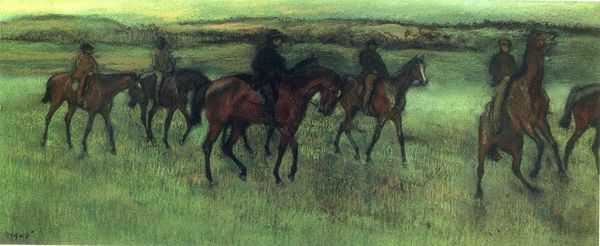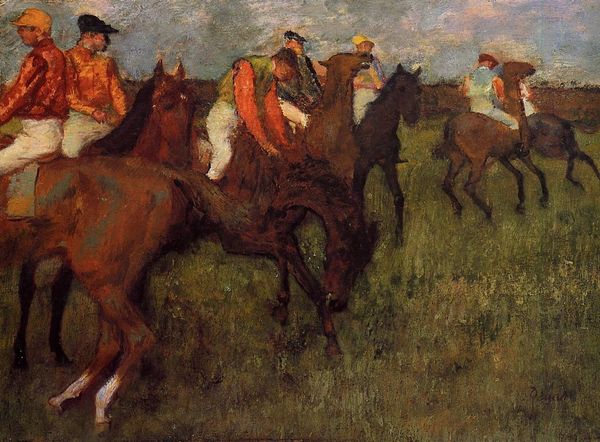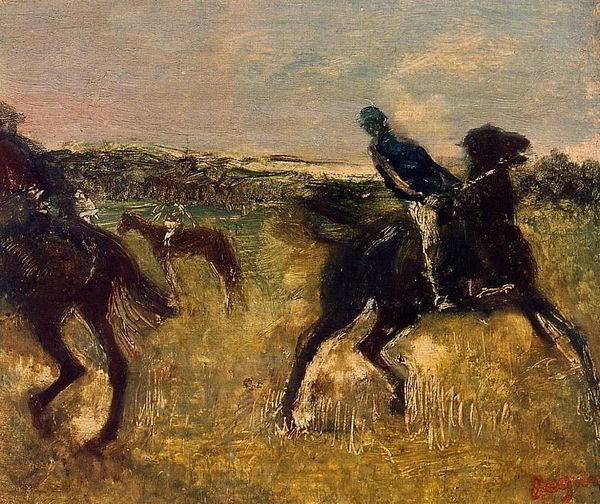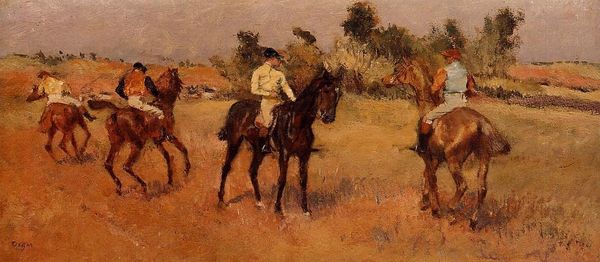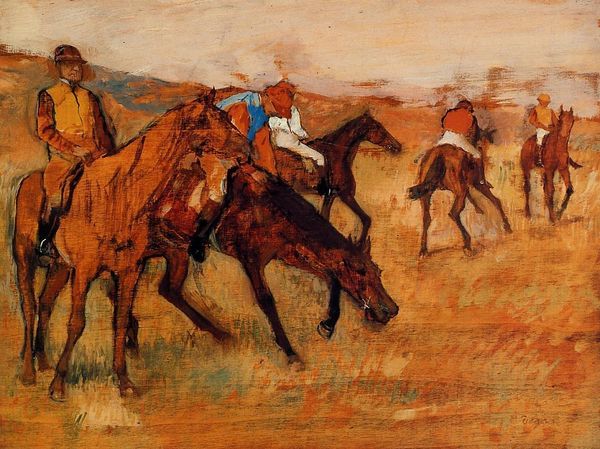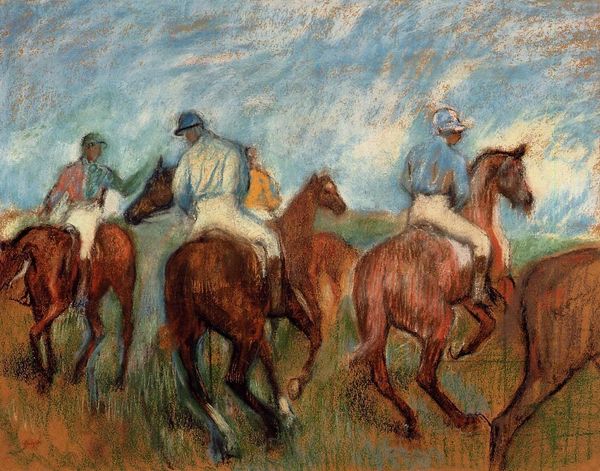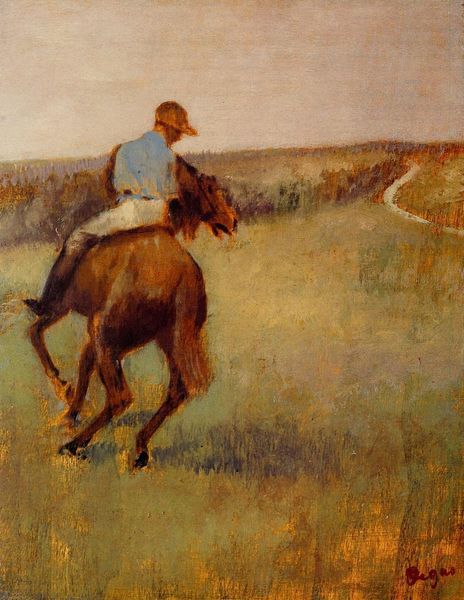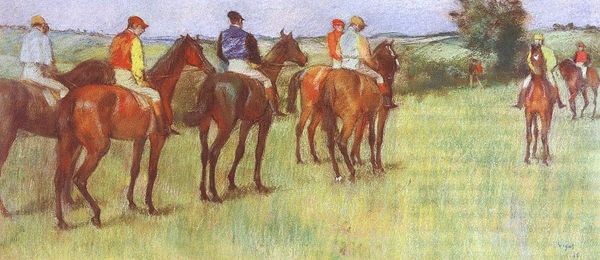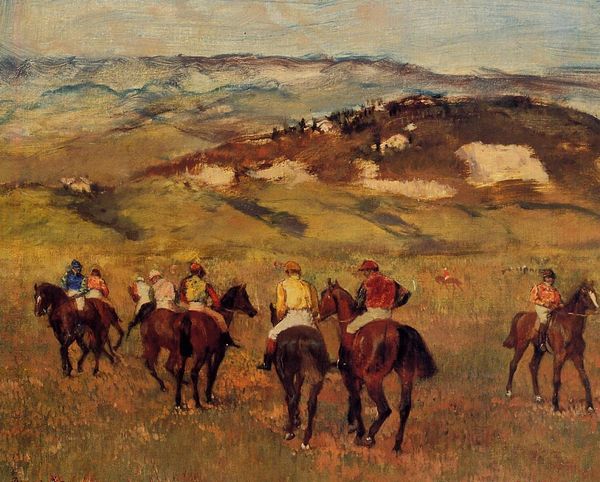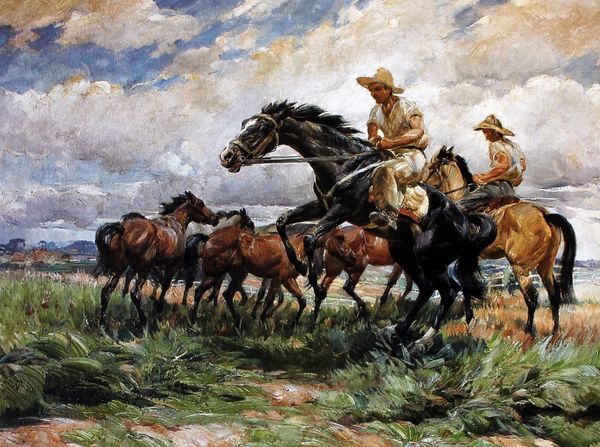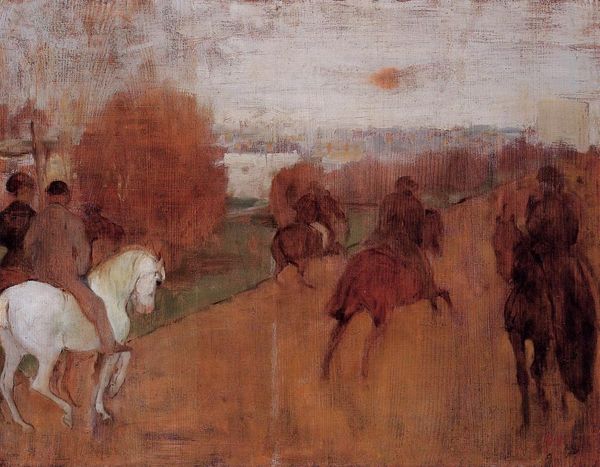
Copyright: Public domain
Editor: Here we have Degas's "The Trainers," an oil painting from 1894. It strikes me as quite cinematic, almost like a still from an early film with its depiction of horses at various stages of movement. What captures your attention in this piece? Curator: What interests me is how Degas utilizes Impressionism, often seen as focused on fleeting moments of beauty, to comment on the culture surrounding leisure and sport in late 19th-century France. How do you interpret the setting? Does it seem idealized, or something else? Editor: I see more of a real, almost gritty portrayal. It's not overtly glamorous. There’s a practical, working aspect to these men and their horses, not just pure recreation. Curator: Exactly! Degas was keen on depicting modern life, and horseracing was a prominent part of it. The framing is what sets his art apart. What can you tell me about that? How does he portray the movement of the horses in a way that wasn’t traditionally done? Editor: The horses aren't lined up neatly; they are fragmented, some blurred as if caught mid-stride. It lacks a clear focal point, conveying the dynamic nature of the racetrack. Almost documentary, like the work of his peer, Muybridge! Curator: Precisely! Consider how this unconventional composition challenges the established academic painting style. Degas is not just painting horses; he is questioning the very structure of art and its role in representing modern society, especially it's socio-economics surrounding horse ownership. A horse was a significant investment. Do you think about that while viewing the work? Editor: It does re-contextualize the image. It reminds us of the social hierarchy associated with leisure at that time. Curator: Absolutely. These “genre” scenes give us insight into French culture and politics of the era. It certainly makes you think about class, access and power in a way a simple Impressionist landscape wouldn’t. Editor: I appreciate how understanding the social context transforms the piece from a simple genre painting into a social commentary! Curator: And how the formal elements of impressionism contribute to that commentary, providing not just a snapshot but a critical perspective. Thanks for the insight!
Comments
No comments
Be the first to comment and join the conversation on the ultimate creative platform.
